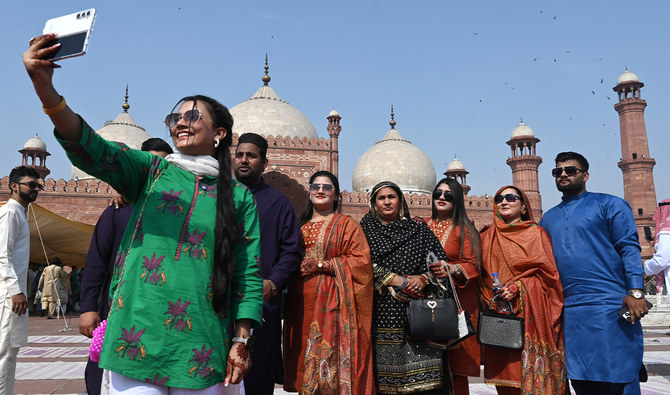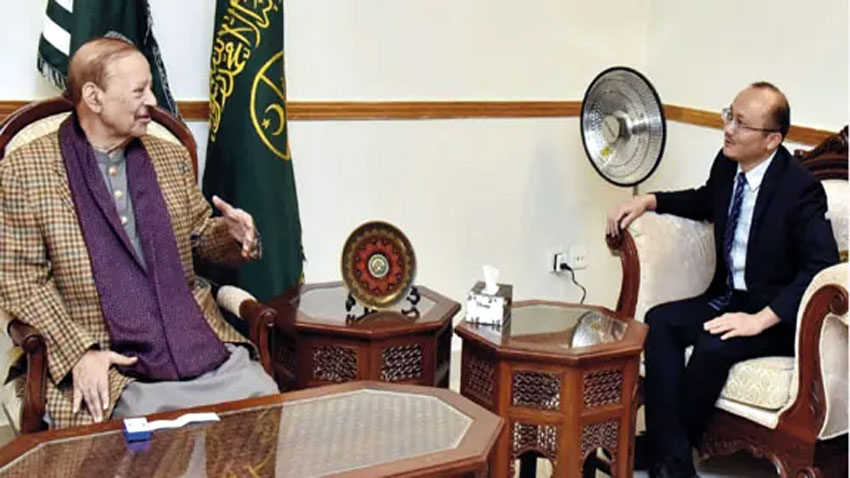ISLAMABAD: Noor Fatima, a first-year pre-med student in the Pakistani capital, had been on a quest to find the perfect Eid dress for days but there was one problem.
The dress she liked cost Rs30,000 ($108), nearly double her budget.
Ahead of Eid each year, women spend hours going to clothing stores or surfing online catalogs in search of their holiday dresses. If Eid falls in the spring or summer months as it has this year, they prefer to buy dresses made of lightweight lawn, long seen as a staple for summer clothes in Pakistan.
The cloth, made of fine combed cotton, is itself ideal for Pakistani climate, and has over generations become the go-to material for traditional shalwar kameez, especially for women. While textile manufacturers like Gul Ahmed have been around since the early 1950s, it is only in the last two decades that branded lawn with round-the-year collections have become a major part of how Pakistanis, from housewives and working women to teenagers and school girls, shop for clothes.
As Eid arrives, the “lawn wars” get more intense as brands release stitched and unstitched collections, billboards, television commercials, flyers, print advertisements and social media bring customers “the most coveted lawn” and online platforms get flooded with images of models, local and international, wearing lawn dresses in exotic locations. Social media is also rife with videos of women fighting over pieces at exhibitions and clothing stores, with the altercations oftening turning physical.
But this year, the advertising and the marketing has not been able to hide the reality that designer lawn is becoming increasingly unaffordable for most people in a country with double digit inflation, with many women surveyed by Arab News saying the price tags this Eid had left them sour.
A general survey of designers shows that dresses sold at Rs9000 ($32.42) last year are now starting at Rs16,000 ($57.64) and going upwards of Rs50,000 ($180).
“Last year, [clothes] were expensive but not as expensive compared to this year,” Fatima told Arab News last week as she shopped for Eid dresses in Islamabad’s F-10 shopping area.
Sumera Tauseef, a principal at a private school, called out lawn designers, saying their prices were not justified.
“Prices have gone really high,” she said, complaining that designers were buying fabric for cheap but selling pret at steep prices and earning exorbitant profits.
“Things that cost Rs18,000 ($64.66) to Rs19,000 ($68.25) in previous years, right now cost Rs30-40,000 ($107.76 - $143.68).”
Many customers said the higher prices did not necessarily mean better quality.
“This time the quality is not there, the designs are very mediocre, and the price is definitely not justified ... So, it has put me in a pickle. It’s been quite a mess this year for everyone,” Sherina Noor, a marketing consultant in Islamabad, said.
“The dresses that I got stitched are way better than theirs [ready to wear] and that too made at a lower cost,” said Mahrukh Sattar, a government officer. “In Pakistan, where people’s affordability is falling, their [designer wear] prices are getting double, triple.”
Imran Khan, a salesman at a multi-brand store, said higher prices of designer clothes had hit demand, with only a limited number of customers now able to afford luxury lawn.
“Last year, Zara Shahjahan, Zaha, and Elan [dress] prices were from Rs9,000 to Rs11,000,” he said, listing a few top brands.
“But this year, their prices have gone to Rs16,000 ($57.47), Rs17,000 (Rs61.06). We are running slow because most customers cannot afford it.”

















